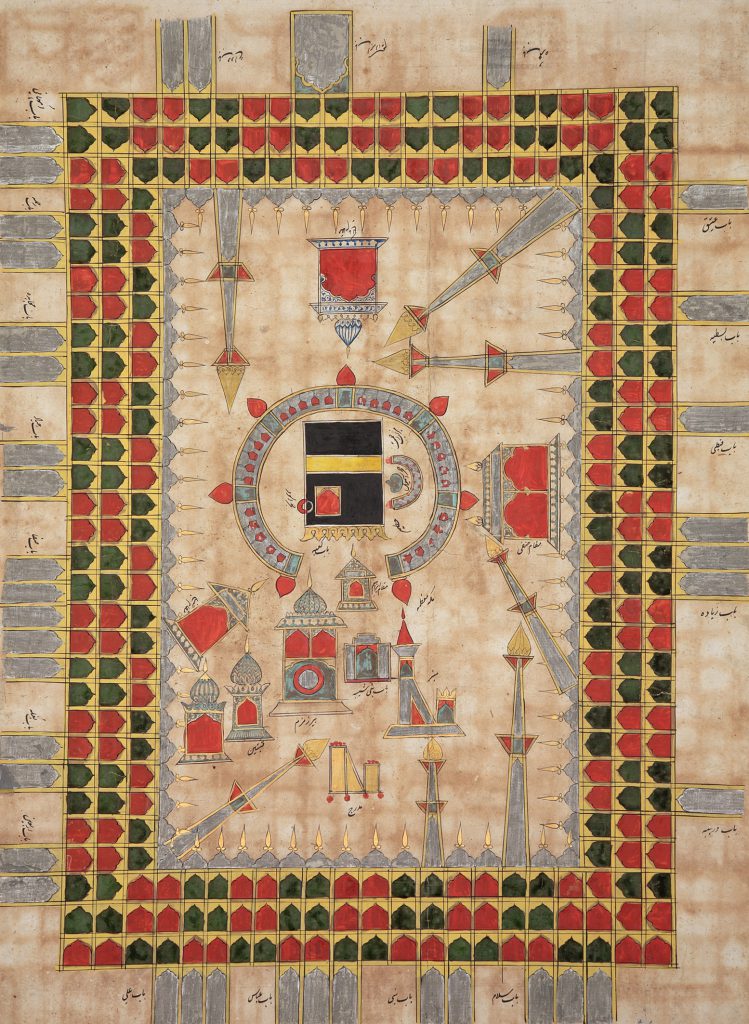



Title: Three Sections from a Pilgrimage Scroll
Date: 17th or 18th century
Location: Mecca, Saudi Arabia
Materials: opaque watercolour, gold, silver and ink on paper
Dimensions: 65 x 48cm (MSS 745.1); 65 x 46.6cm (MSS 745.2); 65 x 41.3cm (MSS 745.3)
Accession Number: MSS 745.1–3
Other Notes:
Examples of hajj certificates – issued as attestations that pilgrims have completed the prescribed rites or that the rites have been completed on their behalf – are known from the 12th century on, although complete early specimens are rare. Their proliferation in later centuries may partly be explained by the increase in proxy pilgrimages. In addition to views of the main stations of pilgrimage in Mecca and its environs, the certificates included a view of the Mosque of the Prophet in Medina. The diagrammatic style of the depictions, which combine elevations with ground-plan views, changed little over the centuries and the same stylistic conventions can be seen in illustrations to literary works on the holy sanctuaries, such as the dala’il al-khayrat. The style of the domes seen on many of the structures suggests that they were painted by Indian artists who were perhaps working in Mecca.
Bibliography:
S. Vernoit, Occidentalism. Islamic Art in the 19th Century, The Nasser D. Khalili Collection of Islamic Art, volume XXIII, London 1997, cat.14, pp.33–5.
J.M. Rogers, The Arts of Islam. Masterpieces from the Khalili Collection, London 2010, cat.291, 292, 295, pp. 256–7, 259.
Zoom
Close

Create your own collection of artworks that you can print or save as a PDF. Please enter you email to enable feature.
Small Flask | JLY 1075
Has been added to your collection.
TIP:
You can now access and view your collection from the main menu at any time.